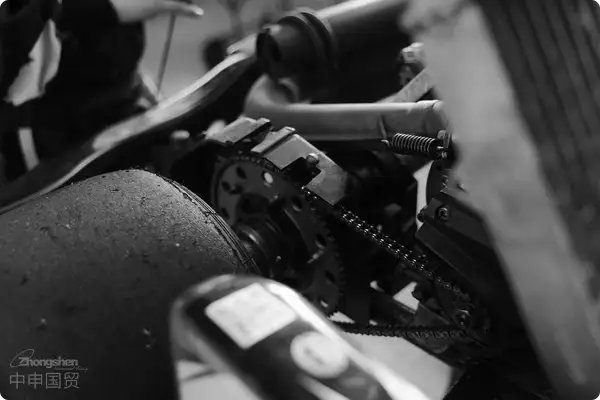- Shanghai Zhongshen International Trade Co., Ltd. - Two decades of trade agency expertise.
- Service Hotline: 139 1787 2118

Professional Analysis: Outer CV JointAutomotive partsImport RepresentationCustoms clearance process and key risk control
As a senior consultant who has been deeply engaged inforeign tradeservice expert with 20 years of industry experience, this article will systematically analyze the core points of clothingExport RepresentationWith 20 years of experience in the industry, the author has an in-depth understanding of automotive parts.Import ClearanceThe complexity and professionalism involved. As a core component of automotive drivetrain systems, the importation of outer CV joints involves multi-dimensional aspects such as technical compliance, document verification, tariff optimization, and logistics coordination. This article will analyze the core procedures, common risks, and response strategies for the customs clearance of outer CV joint imports from a practical perspective, providing enterprises with actionable operational guidelines.
Contents
ToggleI. Breakdown of the Core Process for Import Customs Clearance of Outer CV Joints
1.Preliminary product compliance verification
- Customs Classification and Declaration Elements: The outer CV joint is classified under HS code 8708.99 (other transmission system components). It is necessary to clearly declare the material (e.g., steel/alloy), applicable vehicle models (engine model and chassis number range must be provided), brand model, and...It is recommended to verify through the following methods:certification.
- Technical Standard Review: Compatibility comparison between EU CE certification, US DOT standards, and China's GB/T 19055-2003 "Automobile Drive Shafts with Ball Cage Universal Joints" to avoid returns due to non-compliance with technical parameters.
2.Framework Establishment for Import Agency Services
- Sign the "Import Agency Agreement," clearly specifying the trade terms (it is recommended to adopt DDP terms to reduce buyer risks), payment methods, and division of responsibilities.
- Launch the pre-classification service (AEO-certified enterprises can apply for advance rulings) to lock in the tariff rate (currently the MFN rate is 8%) and VAT rate (13%).
3.Key Document Preparation and Review
- Core Document List: Certificate of Origin, Commercial Invoice (indicating FOB/CIF value and brand authorization information), Packing List, Bill of Lading, Quality Inspection Report (issued by a CNAS-accredited laboratory), Brand Authorization Letter (for anti-infringement verification).
- Risk control points: Focus on verifying the consistency between the consignee information on the bill of lading and the import license to avoid port delays due to documentation conflicts (average daily storage cost is approximately USD50 per container).
4.Customs Declaration and Inspection Handling
- Adopt the "two-step declaration" mode to prioritize cargo pickup, followed by completing the full declaration data (applicable to urgently needed production parts).
- In response to the high inspection rate characteristic of outer CV joints (customs focuses on verifying risks of infringement and anti-dumping), prepare technical drawings, brand traceability documents, and original manufacturer authorization chains in advance.
5.Tax Optimization and Compliance Management
- To apply the RCEP agreement tariff rate (which can be reduced to 5% for ASEAN origin), it is necessary to provide the FORM E Certificate of Origin and proof of direct shipment rules.
- VAT Deduction Voucher Management: Ensure the "Product Name - Tax Code - Amount" triple matching of customs payment documents to mitigate tax audit risks.
II. Typical Risk Scenarios and Solutions
Scenario 1: Delayed declaration due to classification disputes
A company declared HS code 8708.50 (transmission shafts) but was questioned by customs, resulting in a reclassification to 8708.99, which led to a tariff rate difference (8% vs 10%).
Solutions: Entrust a professional institution to issue the "Commodity Classification Opinion Letter" and apply for the Customs Classification Advance Ruling (written response will be received within 3 working days).
Scenario 2: Customs Protection of Intellectual Property Rights
The counterfeit outer CV joint was recorded by the rights holder in the customs system, triggering the cargo detention procedure.
Solutions: Before importation, check the risk of brand infringement through the General Administration of Customs' filing system, or obtain parallel import authorization from the rights holder (must specify "applicable for after-sales maintenance in the Chinese market").
Scenario 3: Circumvention of Anti-Dumping Duties
EU-produced outer ball cages are subject to anti-dumping duties (current rate of 30.6%), and companies face origin verification when transshipping through Malaysia.
Solutions: Utilize the "substantial transformation" certification (local value-added exceeding 35%) and complement it with a factory cost audit report to address and overcome challenges regarding the origin of the goods.
III. Industry trends and agency service upgrades
1.Digital customs clearance acceleration
Access the "Single Window" intelligent customs declaration system to achieve automatic comparison of 20 parameters, including outer CV joint specifications and models (such as SDS/SIC codes) and material composition, reducing customs clearance time to within 72 hours.
2.Supply chain finance empowerment
We have launched a "Customs Guarantee + Supply Chain Financing" bundled solution tailored for small and medium-sized importers.L/CThe capital occupation cycle is reduced by 60% under the payment model.
3.Full-link risk control system
Establish a trinity risk control model comprising an "HS Code Database + Technical Standards Library + Case Library," and provide real-time alerts for updates such as EU REACH regulations and U.S. Section 337 investigations.
Conclusion
The import customs clearance of outer CV joints is a highly specialized task involving the intersection and integration of technology, law, and taxation. Selecting an agency with specialized qualifications for automotive parts (it is recommended to verify their AEO Advanced Certification and historical import data of mechanical and electrical products) can systematically reduce compliance costs and enhance supply chain stability. For a tailored customs clearance solution, you are welcome to contact our team to obtain the *Automotive Parts Import Compliance White Paper* and tariff calculation tools. (Contact information is provided at the end of the article.)
Authors Introduction
Led the completion of over 2,000 batches of automotive parts import projects, proficient in customs clearance technical standards for US/EU/Japanese specifications.
Related Recommendations
? 2025. All Rights Reserved. Shanghai ICP No. 2023007705-2  PSB Record: Shanghai No.31011502009912
PSB Record: Shanghai No.31011502009912









